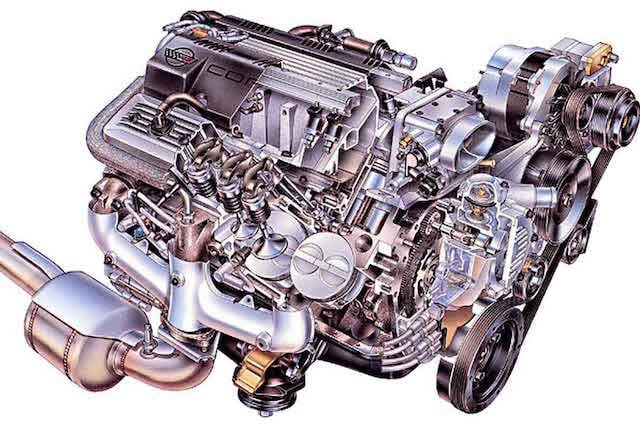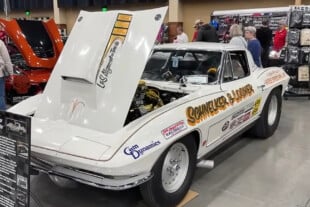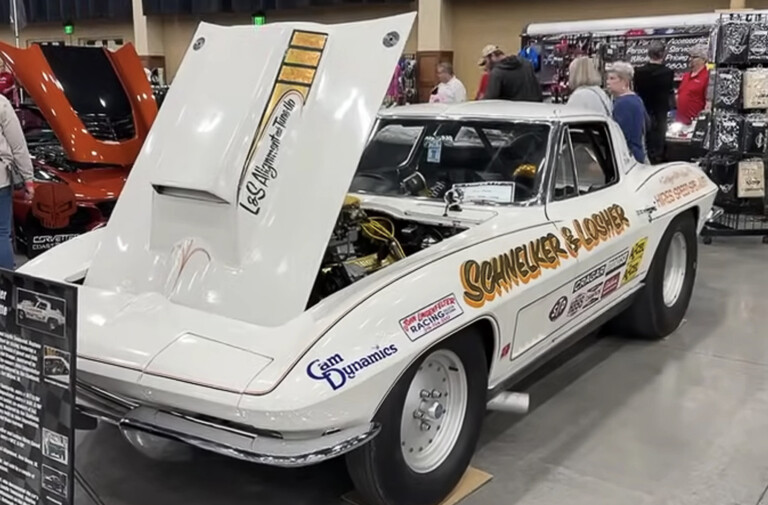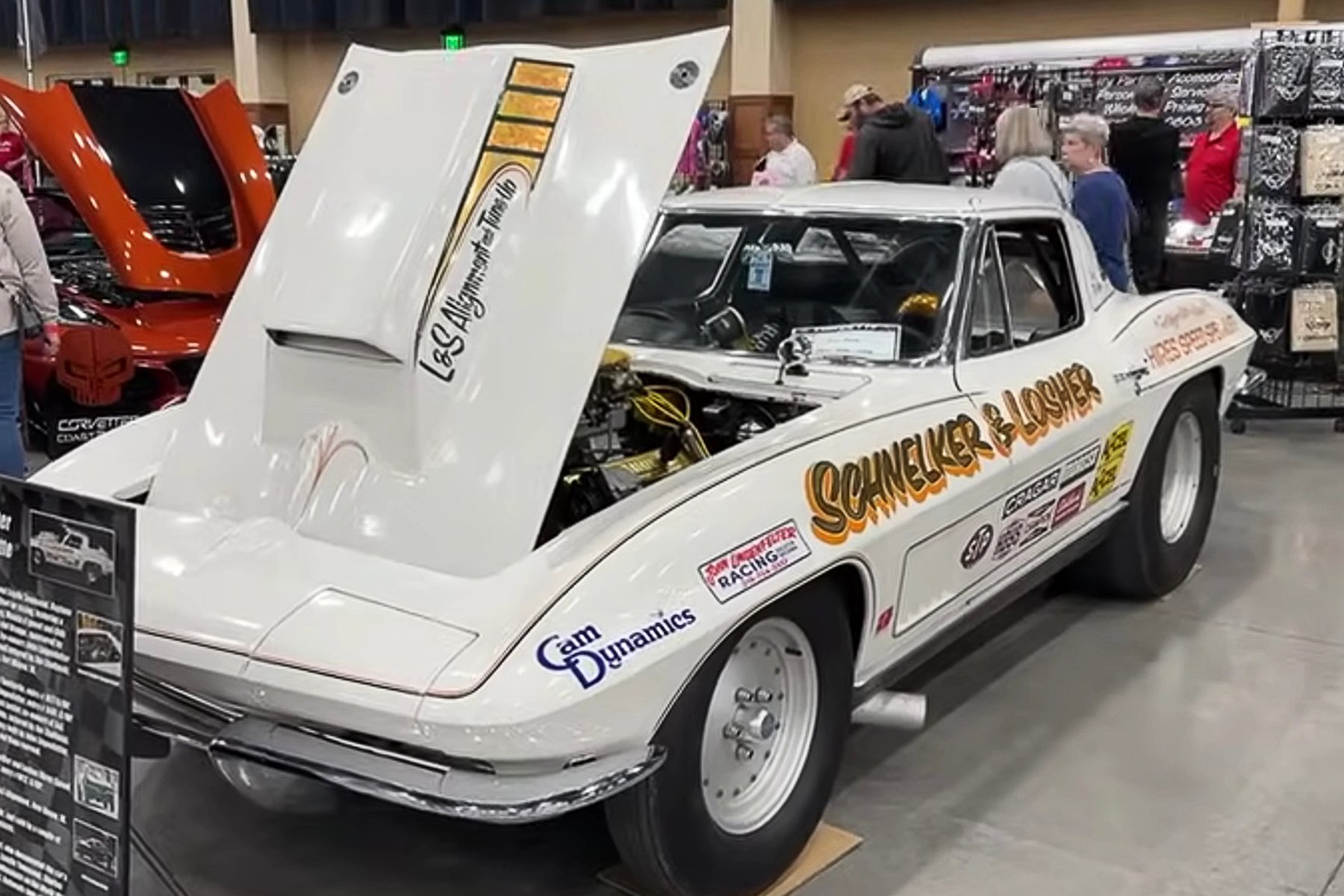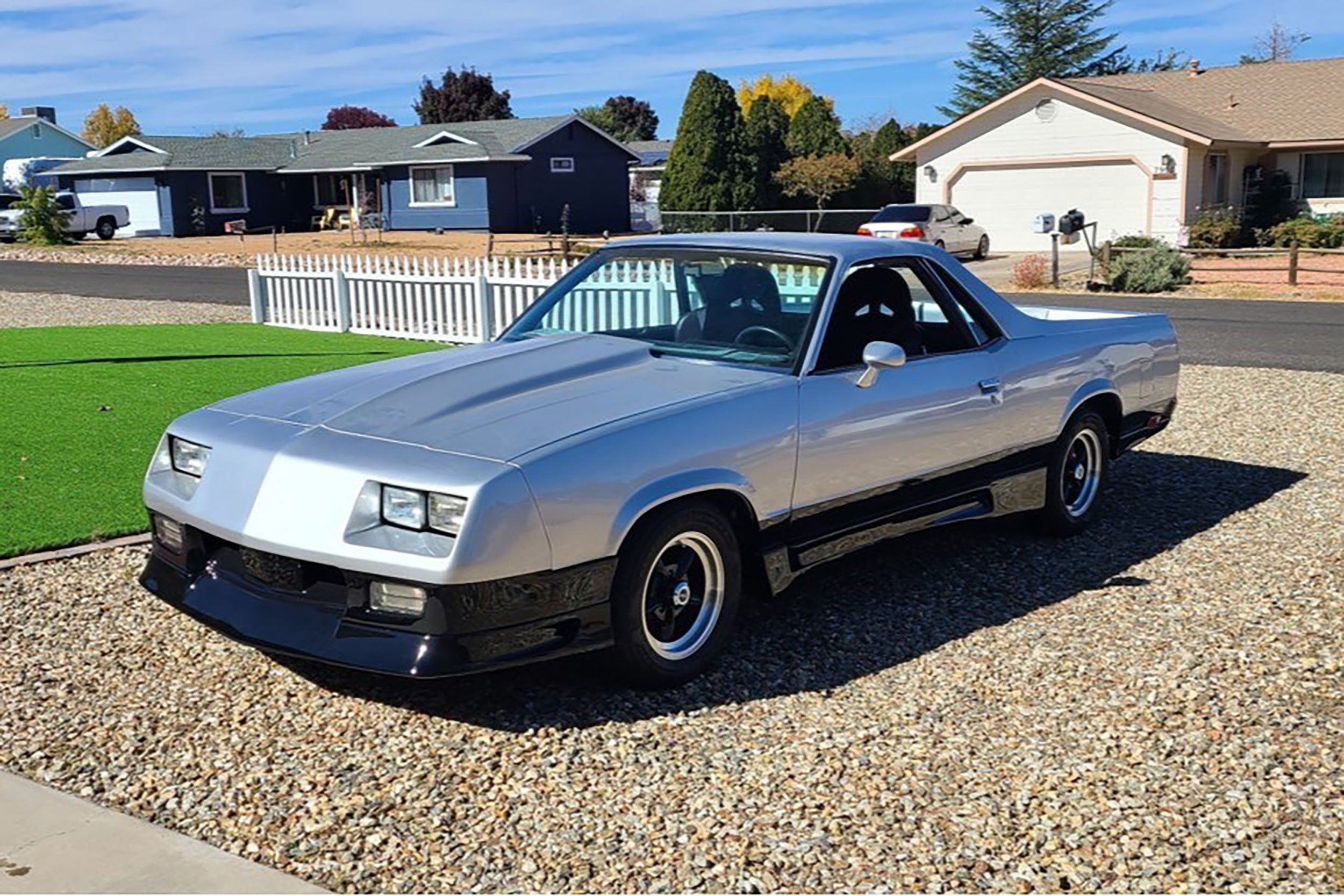The third-generation Camaro has never gotten the respect from enthusiasts like the first two generations of the nameplate. Part of the reason the third-gens suffered so greatly, is because they were a complete redesign from the first two generations. Built without front subframes or leaf spring suspensions, the third-gen Camaros were smaller and saddled by clean air regulations. Fuel injection systems were being integrated into these new Camaros, which confused and frightened some enthusiasts.
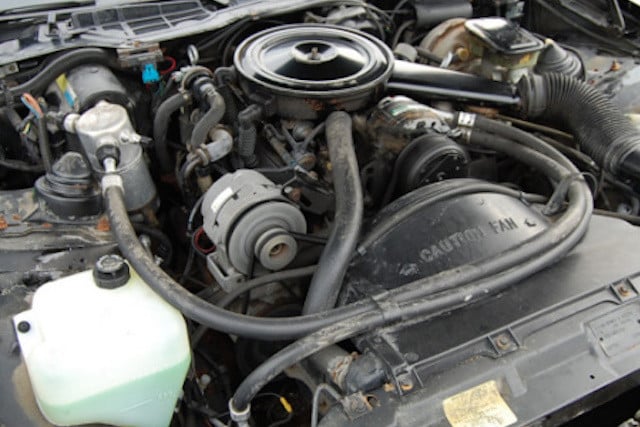
The LC1 V6 engine. Photo from www.82firebird.com
The famous Norwood assembly plant built the third-gen Camaro from 1983 to 1987. The plant produced its last Camaro on August 26. This became known as Black Wednesday to Camaro fans and left the Van Nuys assembly plant as the only plant to carry the load. The Van Nuys plant would close at the end of the third-generation Camaro run in 1992, and Camaro production was moved to Quebec due to air quality regulations.
1982 Camaro Engines – The Ceasefire Engine
Only the LG4 returned from the second-generation Camaro for the beginning of the newest iteration of the model. Replacing the LC3 and LD5 in the first-tier base sport coupe models was the legendary LQ8/LQ9 Iron Duke engine. All of the Iron Dukes were built by the Pontiac division of GM. While the Iron Duke engine had a decent background in racing with aftermarket parts available, neither the LQ8 2-bbl carbureted version nor the throttle-body injected LQ9 were impressive in the Camaro which gave the 1982 model a bad rap.
The mid-range Berlinetta model sported the LC1 V6 engine, which barely increased the performance level, adding to the misery. The optional LG4 305 was hampered with low compression and eked out a modest 145 horsepower. With some tuning, it could be urged to milk out a few more ponies. Thankfully, the Z28 was set to receive the new LU5 crossfire electronic fuel injection, which featured dual throttle bodies on a crossram-style aluminum intake.
The intake was impressive, but it was mounted to the LG4 base engine and failed to add any significant performance. The new crossfire injection system was not easily understood by Camaro owners that tried to do their own tuning, and shortly these engines earned the nickname “ceasefire engine.”

Even the venerable Iron Duke engine struggled to succeed in the third-gen Camaro chassis. Photo from wikipedia.org
1983/1984 Camaro Engines – Second Gen Sophomore Blues
The carbureted Iron Duke 4-cylinder engine was dropped for 1983, but the TBI LQ9 version was retained as the base engine for the sport coupe. The rest of the lineup remained the same with one addition. An optional engine for the Z28 model bumped up the performance level with the L69 high output 305ci topped with a 4-bbl carb. The L69HO was coupled with Chevrolet’s new five-speed manual transmission that added to the power boost.
For 1984, it was more of the same. GM discontinued the LU5 Crossfire V8. The rest of the lineup remained the same. For cars with manual transmissions, GM changed to hydraulic clutch linkage, and the L69 HO Z28 was offered with an optional automatic transmission for the first time. This was a holding pattern year with no performance gains to speak of.
1985 Camaro Engines – Beginning of the IROC Era
Camaro fans finally had something to cheer about with the release of the IROC-Z, which was immediately recognized as a big leap forward after a decade of EPA punishment. The IROC-Z, named after the International Race Of Champions, borrowed a 305 Tuned Port Injection engine from the Corvette line to add some excitement in the new model. This LB9 engine is one of the bright spots in the 305ci engine family. The addition of an upgraded suspension helped get some extra power to the ground, and the IROC-Z helped put the Camaro back on the performance map.

GM’s L69 engine. Photo from www.thirdgen.org
The L69HO engine was the only other performer in the 305ci engine family, and its return in 1985 helped shore up the IROC-Z introduction to the marketplace. Also returning to the Berlinetta and Z28 models was the LG4 base 305ci engine. Although its reputation was starting to tarnish because of its lack of power, small bore size, and difficulty flowing large volumes of air at higher rpm, the LG4 would continue to be offered for the next few years.
1986 Camaro Engines – The 350 Returns
The L69HO made its final appearance in a Camaro, with a total of 74 being installed in IROC-Z cars. The base engine for the sport coupe and Berlinetta models became the LB8 V6, and the four-cylinder option was dropped completely. The 305 TPI LB9 horsepower rating dropped from 215hp to 190hp in the IROC-Z models. All V8 engines received a new one-piece rear main seal.
In June of 1986, a few tuned port, fuel-injected, 350ci-equipped IROC-Zs were released before the switchover to the 1987 model year production, marking the comeback of the 350. In 1987 the L98 engine became a regular option on the IROC-Z, paired with an automatic transmission only.
1987 Camaro Engines – More Of The Same
The Berlinetta was no longer available in 1987. It was replaced with a new LT model, while the base Camaro and Z28 continued as before. While the nameplate was in the final year of production at the Norwood, Ohio plant, the Camaro celebrated its 20th anniversary with almost the same power lineup as the previous year. There were subtle changes throughout the entire engine family however. The LG4 engine and LB9 engine with five-speed manual transmission were available for the first time on the IROC-Z28.
The L98 350 was only available in the IROC-Z with an automatic transmission. The TPI 350 engine had “5.7L” added to the “Tuned Port Injection” decal for visual reference. The LB9 engine equipped with automatic transmission came with 190hp while the Manual LB9 got a 215hp rating. The 350ci L98 gave a boost to the performance ratings with 225hp at 4,400 rpm.
All of the Camaro V8 engines featured hydraulic roller lifters and a new valve cover/head design. Valve covers featured new sealing and center bolts. The cylinder heads featured a new raised lip for improved valve cover sealing, and the two center intake bolts were changed from 90-degree orientation to 72 degrees. The 2.8 V6 carried on with no changes.
1988 Camaro Engines / 1989 Camaro Engines – The Rare 1LE
In 1988, the Z28 was replaced by the IROC-Z for all high performance Camaros, and the LT model was dropped. All five engine options were fuel-injected for this model year. With multiport fuel injection, the V6 LB8 logged 135hp at 4,900 rpm. The 305ci V8 gained throttle-body injection, which brought the net horsepower to 170 at 4,000 rpm. The 305ci LB9 delivered with TPI and manual transmission models was rated at 220hp at 4,400 rpm and the automatic transmission at 195hp at 4,000 rpm. The 350ci L98 with TPI got a small boost to 230hp at 4,400rpm.
Without a doubt, the highlight of 1988 was the 1LE performance package delivered on the IROC-Z with the B2L 350ci engine. Chevrolet limited the availability of this package to race teams only. The package was not listed on any order form, advertising, or dealer ads. You had to know about it and have the “secret handshake” to order it. As a result of the secrecy, only four of the 1LE models were made in 1988, making it very rare. The 1989 model year saw the exact same engine lineup as the 1988 year. There were a total of 111 high performance 1LE Camaros made in 1989.
1990 Camaro Engines – Last Of The IROC-Z
Dodge picked up sponsorship of the International Race Of Champions starting in 1991, which left the 1990 model year as the last for the IROC-Z models. The RPO code 1LE was again available in 1990, by ordering the RPO G92 performance axle, combined with no air conditioning on the IROC-Z coupe. Sadly, only 62 Camaros were built with 1LE equipment in 1990.
Camaros in IROC-Z trim that were equipped with the 5.7 TPI engine received a slight horsepower increase to 245 at 4,400 rpm. The RS base-engine was changed to the LH0 V6, upgrading from the 2.8 LB8 to the 3.1 LH0.
1991 Camaro Engines – Welcome Back Z28
While the IROC-Z was no longer offered, the Z28 made a welcomed return. Although very few changes were made (mostly cosmetic), the Z28 was still an IROC with a stout choice of engines. The top level Z28 L98 V8 was rated at 245 horsepower. All other basic models were the same as the 1990 model power packages.
The 1LE package was continued with equipment similar to previous years, but now the enthusiasts and dealers were becoming more aware of it and production increased to 478 units. In addition to the 1LE package, a B4C “Special Service” option was made available to law enforcement, the government, and military agencies. This Camaro was basically a Z28 badged as an RS, and equipped with the 1LE race package. Just under 600 B4C Camaros were sold in 1991.
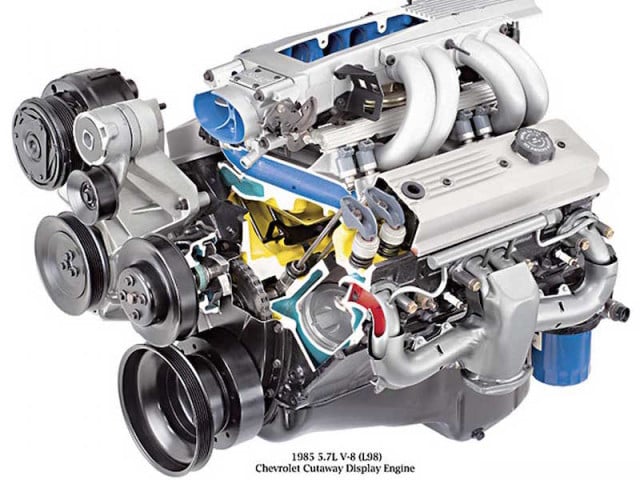
L98 engine. Photo from www.thirdgen.org
1992 Camaro Engines – Last US Built Camaros
The 1992 campaign featured the final Camaro built in the Van Nuys plant (and the U.S.), as the last third generation red Z28 coupe rolled off the assembly line on August 27 of 1992. This year marked the 25th anniversary of the Camaro and Chevrolet had big plans for the occasion. A “25th Anniversary Heritage Edition” Camaro was planned that would feature aluminum cylinder heads from the Corvette line, tubular exhaust headers, and a special 6-speed manual transmission.
Instead of the great engine options, a “Heritage Package” option was offered (RPO Z03). This was an enhanced graphics package with special emblems and rally stripes. No performance enhancements whatsoever, just the graphics package. This was a sad end to the third-generation engine packages. They were exactly the same as the 1991 options. Any changes were purely cosmetic and performance remained identical to the previous year.

LU5 engine. Photo from {=http://www.autotraderclassics.com/car-article/History+of+the+Z28’s+First+25+Years-194179.xhtml}www.autotraderclassics.com{/link}
Looking Back
When it was all said and done, there were several engine options during the 10-year run. The legendary Iron Duke engine powered Camaros from 1982 through 1985, but they were too sluggish and underpowered to really get the heavier car moving. The 305ci engine didn’t improve performance much, but found a solid following among spec-racing enthusiasts. The only engines worth cheering about during the entire third generation era were the L98 V8s that brought the 350ci engine back to the Camaro for the end of the third-gen run. This gave Camaro fans something to look forward to in the next iteration of the nameplate.




